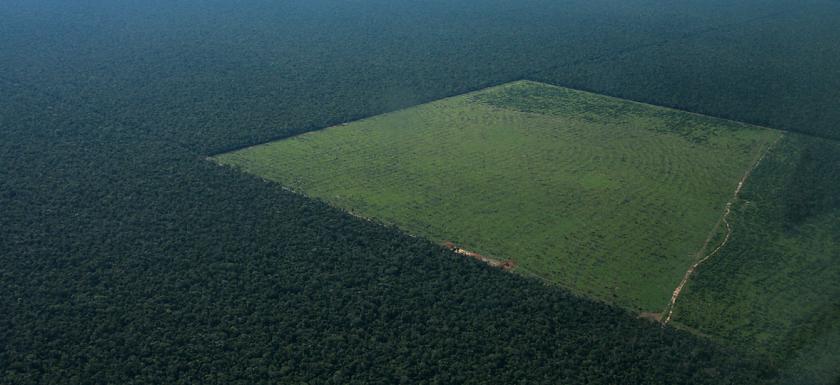Amid news that deforestation in the Brazilian Amazon is linked to soy production, many have been calling on plant-based eaters to stop eating such soy-rich diets, claiming they’re the cause of the deforestation that is destroying habitats and driving climate change. However, those who are claiming this seem to be ignoring the main consumers of Brazilian soy- China’s meat industry.
Soy production in Brazil is a cause of what has been called a “forest-to-farm” movement that is taking place in Brazil. Forest is being destroyed to make room for farms to enrich Brazil’s economy, but because of the poor soil that’s under the forest, the farmers can only use the land for a short period of time before they have to leave it and deforest more land for farmland. This deforestation and forest-to-farm movement is being encouraged by president Bolsonaro, who has created a government that is pushing for deforestation to enhance economic growth, while ignoring environmental protection and calling protections put on the amazon too strong.
Deforestation in Brazil is being linked to soil degradation, water pollution, habitat loss, species endangerment, and high densities of carbon emissions that occur when trees collapse, so much so that deforestation is the second largest source of human caused carbon to the atmosphere. In fact, 29% of Brazil’s greenhouse gas emissions come from soy-related deforestation. The impacts of deforestation are becoming more intense as the forest-to-farm movement grows, and the movement is growing at the hands of Brazil’s soy market.

via the Union of Concerned Scientists
Brazil is the second largest producer of soybeans in the world, behind the U.S., and is the largest exporter of the crop in the world. 12% of Brazil’s total exports are soybeans, making soy a main driver of the country’s economy. Where does most of this Brazilian soy go? China.
China is the top importer of soy in the world, importing 63% of the world's soy exports. China imports most of its soy from Brazil, meaning they’re a main driver of Brazil’s soy market, thus a main driver of the soy related deforestation happening in the country.
China imports so much soy because of their need to use soybean meal to feed their growing meat industry- specifically for hogs and poultry. As China’s population grows, more people are moving into the middle class, and their hunger for meat is growing. China’s meat consumption has grown by 24% since 2011, and is only expected to grow as their middle class is predicted to double in size within a decade.

China isn’t the only place where soy is mainly used for animal feed- it’s the same case worldwide. In the U.S., over 70% of soy grown goes to animal feed. Worldwide, 70-75% of soy is used for animal feed. Overall, only 6% of soybeans grown around the world go straight to human consumption in the form of something like tofu or soy milk.
Overall, the growing amount of vegans and vegetarians worldwide may be leading to an increase in tofu and soymilk consumption, but this isn’t the reason why Brazil is facing such extreme deforestation. The global meat industry that gobbles up a large majority of the soy produced around the world is encouraging the growth of the soybean market in places like Brazil, thus encouraging a forest-to-farm movement that is leading to habitat destruction and greenhouse gas emissions. The most effective way that this soy-related deforestation could be stopped would be to stop eating meat, and perhaps, to eat more tofu.

Kayla Guilliams
Is the blog manager for Zero Waste Club, combining her love for writing with her passion for all things environmental sustainability. She is currently a student at the University of North Carolina at Chapel Hill where she is studying journalism, environmental studies, and food studies in hopes of building a career in environmental activism. You can find her on Instagram as @kaylaguilliams.
